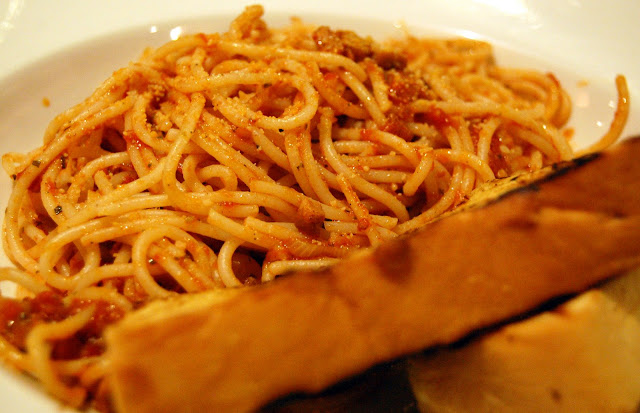The final hand-over was fleeting, surreal, and almost too easy.
First, Notebook 1 has been delayed by 7 months. I deeply apologize for being such a pain in the ass of its last 5 pit stops, especially to jobarracuda who got only 3 days to work on his spread. I was just following instructions, Wilfredo Pascual having asked me to follow-through the notebook’s journey.
I initially proposed July 19 as the date of the final hand-over. However, Notebook 1 was again delayed and we moved it a week later on the 26th. Being the Lagalags that we are, we were racing against time: I am preparing for a trip to the US, we have to catch jobarracuda before he goes back to China, and The Dafinator is leaving for Indonesia.
Disappointingly, not many of the Philippine pit stops responded to the invitation for a grand pansit EB. So after a series of text messages and phone calls and flickr mails, we agreed to move back the hand-over to July 24. It was the flickristasindios’ Thursday mamam sessions and they graciously allowed us to piggy-back.
The Dafinator, however, was not sure of making it. Perhaps it will just be a meeting between Notebooks 1 and 2. Worse, it rained. Hard.
On the 24th, I was the early bird at Fat Johnny’s Grill along Timog Avenue but just in time to catch the Philippine Daily Inquirer reporter who was about to leave because she thought she was in the wrong place. jobarracuda was 30 minutes late. The Dafinator made it along with hubby Patrick Paez. We pored over the notebooks, jobarracuda and I alternating in narrating our own stories, Patrick Paez shooting us with a handycam, and PDI’s Jocelyn Uy doing her notes. We took our shots, had some more chika-chikas, before rewrapping the notebooks in their plastic packages (Notebook 1 in what looked like a cream JRS Express pack and Notebook 2 in a red National Bookstore plastic bag). And then it was over.



The Dafinator and the press left; jobarracuda and I joined the indios’ mamam session. Notebook 2’s akumach who recently arrived from Japan came later. Then angrylittleboy also of Notebook 2. I had a grand time meeting the people behind the flickr names. By 11 pm, I had too many beers and felt like crying. I was missing Notebook 2. It was with me for 7 months and letting go was anything but easy.


But the journey must continue. There will be another party to send-off the notebooks to their final journey. And the hand-over was front page on the Inquirer’s July 27 issue.
PHOTOS EXPLAINED (top to bottom): (1) The Lagalag notebooks' meeting for its penultimate pit stop; (2) Lagalag meets the press and its last pit stop; (3) jobarracuda (left) taking a call from US-based Wilfredo Pascual while angrylittleboy (middle) and akumach looks on; (4) the flickristasindios' Thursday mamam session, and; (5) the night's performers at Fat Johnny's Grill.
First, Notebook 1 has been delayed by 7 months. I deeply apologize for being such a pain in the ass of its last 5 pit stops, especially to jobarracuda who got only 3 days to work on his spread. I was just following instructions, Wilfredo Pascual having asked me to follow-through the notebook’s journey.
I initially proposed July 19 as the date of the final hand-over. However, Notebook 1 was again delayed and we moved it a week later on the 26th. Being the Lagalags that we are, we were racing against time: I am preparing for a trip to the US, we have to catch jobarracuda before he goes back to China, and The Dafinator is leaving for Indonesia.
Disappointingly, not many of the Philippine pit stops responded to the invitation for a grand pansit EB. So after a series of text messages and phone calls and flickr mails, we agreed to move back the hand-over to July 24. It was the flickristasindios’ Thursday mamam sessions and they graciously allowed us to piggy-back.
The Dafinator, however, was not sure of making it. Perhaps it will just be a meeting between Notebooks 1 and 2. Worse, it rained. Hard.
On the 24th, I was the early bird at Fat Johnny’s Grill along Timog Avenue but just in time to catch the Philippine Daily Inquirer reporter who was about to leave because she thought she was in the wrong place. jobarracuda was 30 minutes late. The Dafinator made it along with hubby Patrick Paez. We pored over the notebooks, jobarracuda and I alternating in narrating our own stories, Patrick Paez shooting us with a handycam, and PDI’s Jocelyn Uy doing her notes. We took our shots, had some more chika-chikas, before rewrapping the notebooks in their plastic packages (Notebook 1 in what looked like a cream JRS Express pack and Notebook 2 in a red National Bookstore plastic bag). And then it was over.



The Dafinator and the press left; jobarracuda and I joined the indios’ mamam session. Notebook 2’s akumach who recently arrived from Japan came later. Then angrylittleboy also of Notebook 2. I had a grand time meeting the people behind the flickr names. By 11 pm, I had too many beers and felt like crying. I was missing Notebook 2. It was with me for 7 months and letting go was anything but easy.


But the journey must continue. There will be another party to send-off the notebooks to their final journey. And the hand-over was front page on the Inquirer’s July 27 issue.
PHOTOS EXPLAINED (top to bottom): (1) The Lagalag notebooks' meeting for its penultimate pit stop; (2) Lagalag meets the press and its last pit stop; (3) jobarracuda (left) taking a call from US-based Wilfredo Pascual while angrylittleboy (middle) and akumach looks on; (4) the flickristasindios' Thursday mamam session, and; (5) the night's performers at Fat Johnny's Grill.











